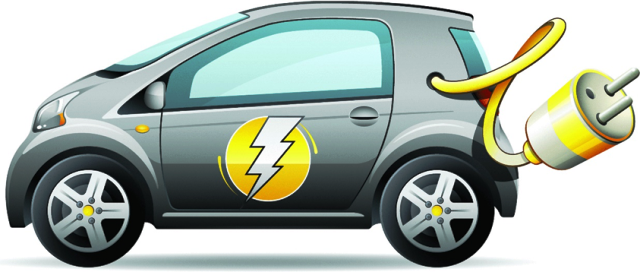This factsheet is published by the US Energy Department about electrical cars.
10. Did you know that the average American’s daily round-trip commute is less than 30 miles? With many electric vehicles having a range of more than 70 miles a charge, they are a reliable and comfortable way for Americans to get from point A to point B. For longer trips, a plug-in hybrid electric vehicle with a back-up internal combustion engine may be a good alternative. Both help reduce our dependence on foreign oil and contribute to a cleaner environment. Watch our Energy 101: Electric Vehicles video to learn more.
9. The electric vehicle market is growing faster than you might realize. More than 7,000 plug-in and all-electric vehicles were sold in October 2012 — making it the highest month of electric car sales to date.
8. Currently there are 13 electric vehicle models on the market, and the number continues to rise. For model years 2013 and 2014, manufacturers are expected to debut at least 18 new plug-in hybrid and all-electric vehicles, including the 2014 Chevrolet Spark EV and 2014 Fiat 500e — both of which were unveiled this week at the 2012 Los Angeles Auto Show.
7. Electric vehicles are a highly efficient mode of transportation. Up to 80 percent of the energy in the battery is transferred directly to power the car, compared with only 14-26 percent of the energy from gasoline-powered vehicles.
6. Unlike gasoline-powered vehicles, electric cars emit no tailpipe pollutants when running on electricity — cleaning the air we breathe and helping automakers meet the Obama Administration’s new fuel economy and emissions standards.
5. The battery technologies in almost all of the electric vehicles on the road today were created with support from the Energy Department, which also played a key role in the development of today’s lithium-ion batteries. Argonne National Laboratory developed breakthrough battery technology — a combination of lithium-rich and manganese-rich mixed-metal oxides that offers at least 50 percent more energy storage capacity — that is licensed by several companies including Envia, Toda, BASF and Compact Power/LG Chem. The Department continues to support the advancement of the next generation of battery storage technologies that will lower cost and improve range as part of the Joint Center for Energy Storage Research.
4. The battery is one of the most expensive parts of an electric vehicle, but technological advances are making batteries less costly. Before 2009, a 100-mile range electric battery cost $33,000. Today it costs about $17,000, and it is projected to drop to $10,000 by the end of 2015.
3. Beyond wiper blades and tires, all-electric vehicles require little maintenance, saving consumers money over the life of the car. Even the brake pads last longer in electric vehicles because they use regenerative braking to slow down — a method of converting the energy used to reduce the car’s speed into power that is stored in the car’s battery.
2. In the United States, electricity costs between 3 and 25 cents per kilowatt-hour while this week’s national average for a gallon of gasoline is $3.42. It costs only $1 for today’s all-electric vehicles to travel the same distance as a similar-sized gasoline car would on a gallon of fuel. This adds up to a savings of more than $2 a gallon or $1,000 a year in refueling costs, and the next generation of electric vehicles will bring even bigger savings.
1. A majority of the electric vehicle owners charge their cars overnight at home when the electricity costs are lower. But with more than 5,000 public charging stations across the country, refueling your electric vehicle while away from home is even easier. Check out the Alternative Fueling Station Locator to find one near you.



